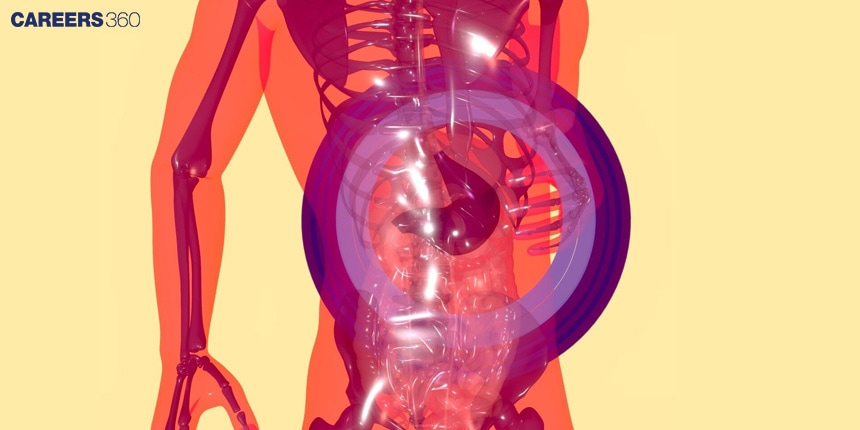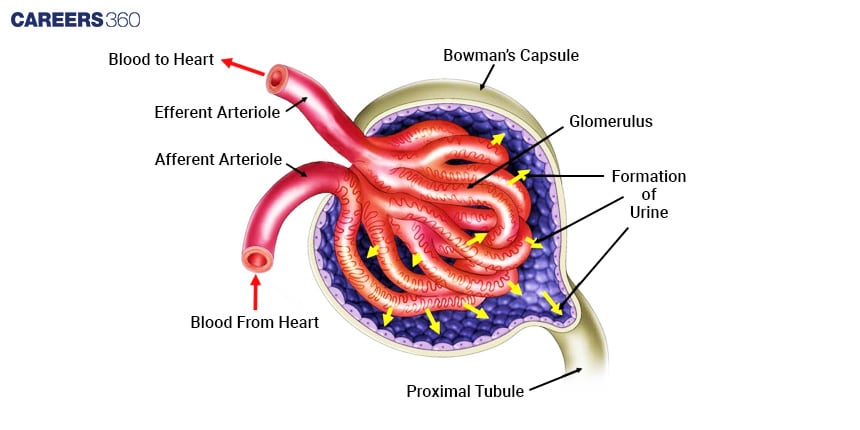Tubular Secretion And Tubular Reabsorption: Definition And Difference
Tubular Secretion And Reabsorption Definition
It is a vital process in the nephron, which ensures that waste products are excreted and important substances reabsorbed into the bloodstream to maintain the homeostasis of the body. These processes are very basic in balancing electrolytes, flushing out waste products, and thus regulating blood pH, all of which are vital for normal functioning.
Don't Miss: Most scoring concepts for NEET | NEET papers with solutions
NEET 2025: Syllabus | PYQs | Crack NEET in 2 months - Study Plan
NEET Important PYQ & Solutions: Physics | Chemistry | Biology | NEET PYQ's (2015-24)
- Tubular Secretion And Reabsorption Definition
- Nephron
- Tubular Reabsorption
- Tubular Secretion
- Recommended video on Tubular Secretion And Tubular Reabsorption

Nephron

The Nephron is termed as the functional unit of the kidney.
It is a very important structure for filtering blood, reabsorption of important substances back into the blood, and secretion of waste products.
There are approximately a million nephrons in each kidney.
Major Components Of A Nephron
It is made up of the following structures:
Glomerulus: The type of capillary bed that is involved in the filtration of the blood
Bowman's capsule: The structure surrounding the glomerulus and into which filtrate enters
Proximal convoluted tubule: The nephron segment is involved in the reabsorption of nutrients, ions, and water.
Loop of Henle: Involved in urine concentration and reabsorption of water and salts back.
Distal convoluted tubule: Further fine-tunes the composition of the fluid that eventually became urine.
Collecting duct: Actual final concentration of urine
Tubular Reabsorption
The process by which the nephron removes water and solutes from the tubular fluid and returns them to the blood.
Such reabsorption is essential for the conservation of valuable substances—e.g., glucose—and also for the maintenance of fluid and electrolyte balance.
Process Of Reabsorption
It uses both active and passive transport mechanisms to transport the substances from the tubular fluid and enter into the blood.
Characteristic of reabsorption at the different parts of the nephron
The proximal convoluted tubule: Reabsorbs a very high percentage of filtered water, glucose, amino acids, and ions.
The loop of Henle: Reabsorbs water and salts till the urine has been concentrated.
The distal convoluted tubule: Balances the ion and water concentration.
Collecting duct: Under hormonal control, for example by ADH, which provides variability of the added absorption fraction of water by the needs of a body.
Active reabsorption implies pumping reabsorbed substances through the membrane (against the gradient of their concentration), and passive transfer (reabsorption of a substance) delivers the energy of the transfer, which is powered by the gradient of diffusion
Substances Present In Urine
Ions hydrogen and potassium, some drugs, metabolites, and nitrogenous waste
Hormonal Regulation
The rate of secretion is much contributed toward by aldosterone and antidiuretic hormone, ADH
Tubular Secretion
Tubular secretion is defined as the process through which the nephron adds substances from the blood back into the tubular fluid. It serves to clear the blood and regulate its pH.
Process Of Tubular Secretion
An active process where substances are taken out of the blood and added to the tubular fluid, mainly for excretion
Secretion At Different Nephron Sections
Proximal convoluted tubule: Hydrogen ions, ammonia, and some drugs.
Distal convoluted tubule: the site of potassium and hydrogen ions-secretion
Collecting duct: secretes hydrogen and potassium ions, for regulating the pH of urine
Substances Secreted
Hydrogen ions, potassium ions, creatinine, drugs, toxins.
Factors And Hormones Regulating Secretion
Hormones such as aldosterone, and blood pH.
Conclusion
Tubular reabsorption and secretion are quite undeniably both very significant processes in the body, more so in the nephron, where they become the leading activity regarding body fluid composition regulation.
The study of this single process will enable proper diagnosis and subsequent treatment of conditions related to kidney function.
It is a subject in continuous research, and even development in the field of nephrology will expand our knowledge and the way of management of renal disorders.
Recommended video on Tubular Secretion And Tubular Reabsorption
Frequently Asked Questions (FAQs)
Tubular reabsorption helps to return useful substances out of the tubular fluids to the blood, whereas the tubular secretion adds waste substances out of the blood to the tubular fluid for excretion. It helps conserve essential nutrients and helps the body maintain fluid and electrolyte balance.
Commonly reabsorbed substances are water, glucose, amino acids, sodium, potassium, chloride, and bicarbonate.
Hormones like aldosterone control tubular secretion by being responsible for ion transfer; potassium and hydrogen are some of the ions that form the composition of urine and the urine pH.
Abnormal reabsorption and secretion are associated with the disease states of disease including diabetes mellitus, renal tubular acidosis, and abnormalities in electrolytes.
Also Read
28 Nov'24 08:16 PM
28 Nov'24 06:24 PM
28 Nov'24 12:06 PM
27 Nov'24 04:33 PM
27 Nov'24 02:40 PM
27 Nov'24 12:24 PM